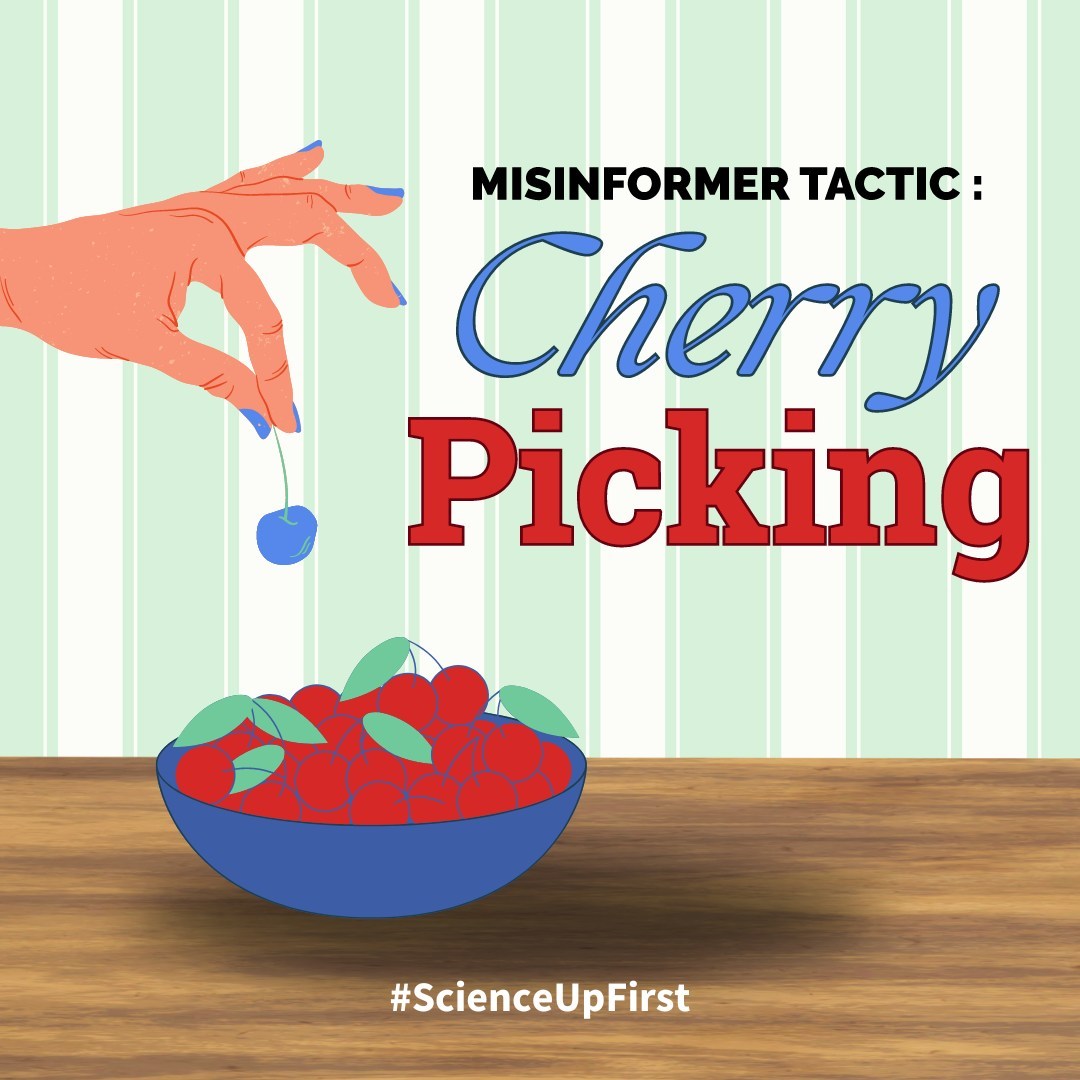
Have you ever heard, “Meteorologists can’t predict the weather. Last week they said it was going to rain and it didn’t!”?
While it’s true that meteorologists sometimes miss the mark, a 5-day forecast can accurately predict the weather 90 percent of the time (1,2,3). Focusing only on those few misses while ignoring all the accurate predictions is an example of cherry-picking evidence.
Same goes with science. When scientists reach a consensus, it means that a vast majority of experts in a certain field agree based on extensive evidence (4). For example, over 97% of climate scientists agree that climate change is real and driven by human activities (5,6,7,8). It does not mean that there are no contradictory studies – there usually are (9). But picking only the studies that support your view while ignoring the bulk of evidence is misleading.
Cherry-picking happens when people intentionally or unintentionally select evidence that fits their narrative while ignoring all the data that might contradict it. This misinformer tactic is often used by denialists or people who support a controversial opinion (9,10). By only presenting the few examples or studies that best align with their view they make it seem like their idea actually aligns with the scientific consensus (10). Others will deny or discredit all work that goes against their belief, but accept the same scientific process when the findings align with their ideology (11).
As humans, we often select information that already aligns with our beliefs. That’s called a confirmation bias (10,11,12). To avoid doing unintentional cherry-picking, be mindful of your own bias, take time to form an opinion, and ask yourself if any other evidence might be available (10).
We are all a little biased. It’s human nature. But by recognizing our bias, we can avoid the cherry-picking trap! Let us know if you want to see more posts about human biases!
Sources: https://tinyurl.com/SUFCherryPicking
Share our original Tweet!
Have you ever heard of “cherry-picking”?
— ScienceUpFirst | LaScienced'Abord (@ScienceUpFirst) May 31, 2024
This is when certain data has been selected to fit a specific narrative. It’s a misinformer tactic often used by people with controversial opinions…
Learn more here 👇 https://t.co/YjMBJ4qIfR#ScienceUpFirst pic.twitter.com/xzM9VJocHA
View our original Instagram Post!



